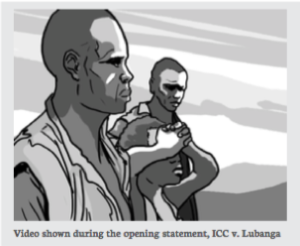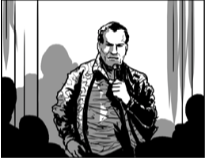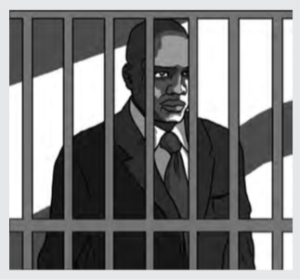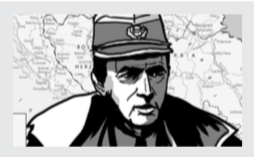This blog was written by Elizabeth O’Shea, Program Fellow, and Kelly Matheson, Senior Attorney and Program Manager, with WITNESS. The views expressed here do not necessarily represent the views of the Open Society Justice Initiative.
More and more, people around the world are seeing for themselves the power of video in court. One recent example took place on March 24, 2016, involving Elor Azaria, a member of the Israeli Forces. According to media reports, a Palestinian man, Abdel Fatah al-Sharif, attacked Israeli soldiers and was shot and wounded as a result. As he lay on the ground, immobile, Azaria shot Al-Sharif in the head, killing him. This incident was captured on video by a citizen witness and released publicly by a human rights organization. Azaria was charged and is currently on trial for manslaughter in a military court in Israel.
The Israeli Forces conducted its own investigation into the incident, including video captured in the aftermath of the shooting by an ambulance driver and settler activist. The lead investigator for the Israeli Forces has testified during Azaria’s trial that the ambulance driver began filming the scene after the shooting, but the video stopped, during which time an unidentified person moved the knife closer to the body of Al-Sharif. The video recommenced, suggesting that the ambulance driver tampered with evidence to make the killing look more like self-defense. The citizen witness video footage contradicted the ambulance driver’s footage – it showed that the knife was three to four meters away and well out of reach of Al-Sharif, both before and after he was killed. Without this citizen witness video, it is hard to imagine that this prosecution would be taking place.
As the camera phone becomes commonplace, committed human rights advocates and gutsy residents who live in the zone where international crimes are perpetrated are using video more and more to capture human rights crimes and the aftermath. It is reasonable to think that more of this kind of video will be used in all kinds of legal proceedings. Such videos can help prompt immediate action to stop human rights abuses, as well as be part of formal justice processes and accountability over the long-term.
Video has already been used in cases before the International Criminal Court (ICC) to prosecute war criminals. Between 1994 and 2003, the Democratic Republic of Congo was embroiled in a complex conflict that cost 5 million lives. Thomas Lubanga Dyilo served as one of the many militia leaders. In 2006, he was charged by the ICC or the war crimes of conscripting, enlisting, and using child soldiers under the age of 15 actively in hostilities. One of the elements of the crime that needed to be proved by prosecutors was the age of the soldiers. This was a challenge in the context of a war-torn country, where records were non-existent and witnesses were frightened to speak out.
A few brave and forward-thinking NGOs collected video footage of child soldiers during the conflict. They hoped it would someday be used to hold warlords accountable. Initially, they shared this footage with prosecutors at the ICC. They asked the ICC to launch an investigation into the use of children, and the ICC did. As part of the investigation, the ICC collected additional footage. This footage was introduced as direct evidence at trial to prove that some of the Lubanga’s forces were under the age of 15. Without this footage, a guilty verdict would have been much more difficult to secure – there was simply no better way to prove this element of the crime.
 Video captured by citizens, human rights activists, and advocates plays a very important role in these legal cases. It is important to think through what steps can be taken to make sure that video captured on the ground is ready and able to be used in court.
Video captured by citizens, human rights activists, and advocates plays a very important role in these legal cases. It is important to think through what steps can be taken to make sure that video captured on the ground is ready and able to be used in court.
Prosecutors from the ICC have repeatedly made clear that they understand the important role played by first responders on the ground where and when the crimes happen. As summarized in a workshop on collecting and analyzing evidence of international crime, “Without NGO cooperation, the Office of the Prosecutor may never discover or obtain the relevant evidence to ensure perpetrators are held responsible for their crimes.” However, it can be a challenge to make sure videos collected meet the standards required for use as evidence in long-term legal processes. Of course, even if this video does not end up as evidence in legal proceedings, it can be a very useful advocacy tool. To improve the chances that video could be used in court, documenters need to know how to capture reliable and relevant footage. The chances of achieving this skyrocket with access to the right information and when documenters work closely with lawyers.
There are many fairly simply techniques documenters can implement to improve the reliability of the video footage. This includes working out how to capture content so the video will be easily verifiable by a person who was not at the scene, knowing how to properly preserve the original file over time, and understanding how to document the chain-of-custody.
Capturing and preserving footage that is legally relevant and useful is slightly more complex. It requires understanding basic principles of law so documenters know what to put in the camera’s frame. It involves thinking about when is the best time to share these videos – even in an age of instant sharing and viral videos, there may be some very good reasons to wait. It also necessitates knowing how to organize video files so that investigators and lawyers can easily search for footage relevant to the cases they are building days, weeks, or even years after crimes occurred.
Instinctively, we imagine that we will point our cameras towards the violence and the impact on victims. But the prosecutors at the ICC have also emphasized how critical it is that documenters think about how video can be captured and used to link key decision makers to the events in question. This evidence might seem less direct (and it’s certainly not going to make the headline news), but it is just as crucial to the prosecution. This video can come from all sorts of unexpected places.
One example is that of Commander Zdravko Tolimir. Tolimir was charged with joint criminal enterprise for the massacres and evictions at Srbrenica. One of the key pieces of evidence was a video – not of the crime itself – but one that linked Tolimir to the events in question. It was footage of a speech given at a New Year’s Eve party by General Mladić, Tolimir’s boss. Mladić listed by name the main decision makers during the relevant time in the region’s history, including Tolimir, and thanked them for their assistance. This helped prove that Tolimir was member of the inner core and participated in the decision-making that led to the atrocities at Srbrenica. This was essential to successfully prosecuting the crime. While the footage of Mladić came from an insider because the party was invite-only, many speeches are public and while filming them may not feel like an effective use of time when conflict is raging all around, it’s sometimes the innocuous footage like this that proves to be invaluable in court of law.

Screenshot from video shown during the Tolimir trial showing General Mladić giving a New Year’s speech
To respond to the needs of documenters and improve the evidentiary value of their video so the footage they courageously collect does not land on the proverbial cutting room floor, WITNESS released the Video as Evidence Field Guide. It is aimed at documenters who find themselves on the frontline of human rights work and the lawyers that seek to support them. It sets out basic practices on how video can be better captured, organized, managed, verified and shared to secure accountability inside and outside the courtroom. It includes real world examples of how video has been used successfully in interesting and exciting ways, as well as some traps to avoid.
As noted in an earlier blog as part of International Justice Monitor’s technology for truth series, the Field Guide will bridge the gap between frontline defenders and human rights lawyers, “ensuring activists can support lawyers and lawyers can support activists.”



Do you mind if I quote a few of your articles as long as I provide credit and
sources back to your website? My blog site is in the very same niche
as yours and my visitors would certainly benefit
from some of the information you present here. Please let
me know if this ok with you. Many thanks!
Amazing! Itts genuinely amazing article, I have got much clear
idea on thee topic of from this post.
I am truly glad to glance at this web site posts which includes plenty of useful facts, thanks for providing such statistics.